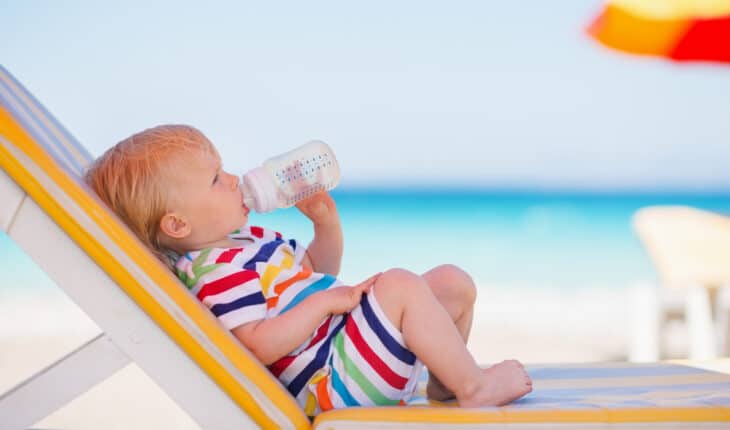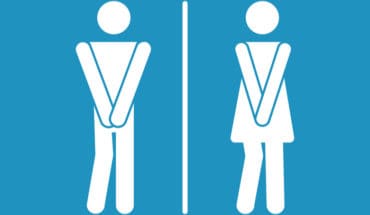Tips to protect your baby or child from the sun: Babies over six months old can enjoy a limited amount of sunlight, providing they have been protected by the appropriate measures. It is especially important to protect younger ones from harmful UV rays as those who are burned as young children are 80% more likely to develop melanoma (a form of skin cancer) later in life.
Here are our top tips for keeping your baby or child safe from the risks of burning or overheating.
Clothing Matters
Choose tight-weaved clothing that covers the baby’s whole body. Look for garments with a UPF of 50 which will block 98% of UV radiation.
Don’t Forget the Caps
Choose wide-brimmed sun hats (not caps) which will cover your baby’s neck and ears too.
They should also wear sun glasses to protect their eyes.
Sunglasses are for Babies Too
Sunglasses should meet the British Standard (BSEN 1836:2005) and carry the CE mark – check the label. This is because the UV rays can cause eye damage to a baby’s young eyes.
Fluids Needed
Fully breastfed babies should not need to be given extra water – but do check for any signs of dehydration. Otherwise, babies under 6 months should be regularly given cooled boiled water. Over six months of age, they can be given regular water.
Sleeping Atmosphere
In summer, it is best to create a cool sleeping environment for your baby. Place your baby’s feet to the foot of the cot, on a flat mattress without blankets or pillows.
Beware Certain Pram Covers
When out and about in the summer with your baby in a buggy or pram, sleep can be more problematic. Don’t be tempted to put a blanket over the pram to block out the sunlight as this can trap warm air within the buggy, causing the temperature to soar to dangerous levels.
Instead ideally opt for a mesh pram cover that will block out sunlight and allow air to circulate. Always ensure you park your buggy in the shade and keep checking to ensure it remains shaded and cool.
Clouds are no match for UV rays
Remember, you can still get burned in the shade. Sun protection remains essential even on overcast days. If the temperature seems low to you, remember that it could still affect a young baby or child.
Don’t Forget the Impact of Water
Many people do not know that if you are on or near a body of water, this will dramatically increase the potency of the sun’s rays. Sun cream should be reapplied after swimming.
Darker Skin Tones Can Still Burn
Babies with very pale skins are most at risk from burning, however, babies with darker skin are still susceptible to sun damage and can burn.
Sun Cream
In the UK the general advice is that children under 6 months should not use sun cream.
Why?
Infants’ skin is thinner than adults, with a much thinner stratum corneum, the dead outermost skin layer. Therefore, an infant’s skin is less able to protect the body effectively against chemicals in sunscreen which could penetrate deeper into their skin, making newborn babies more vulnerable to allergic reactions such as contact dermatitis, inflammation or other harmful effects from chemical absorption. Newborn skin also lacks the film on the skin’s surface (known as the acid mantle) that protects the skin from bacteria viruses, and trans-epidermal water loss (TEWL), a condition that can lead to dehydration. The lack of the acid mantle could leave babies more vulnerable to the chemicals in sunscreen.
Babies also have a higher surface area-to-body weight ratio than older children and adults. A baby’s body surface area is about four times the body surface area-to-weight ratio in adults, which gives a far greater body surface area and leaves them exposed to far greater penetration by chemicals. In adults, most sunscreen ingredients don’t get absorbed systemically into the bloodstream — and those that do are absorbed in tiny amounts. However, for babies this is far more likely.
In addition, babies could try and lick sun cream from their bodies causing it to be ingested. This is another reason the Skin Cancer Foundation recommends delaying the use of sunscreen until your baby is at least six months old.
There has been very little research undertaken on sunscreens for babies, most studies have been done on adults.
Using sunscreen
If your baby has reached over six months of age, they should be wearing sun cream from around April to October (use your judgement to decide – they may need it as early as March, weather dependent).
Babies and young children are more prone to rashes than adults. One fifth of adults report skin irritation from sun cream, so it is important to:
Choose a sun cream designed for babies.
Choose wisely:
Choose a hypoallergenic sun cream specifically designed for babies.
You should choose a high factor (SPF 50). For children the NHS recommend at least a factor 15. It should have at least a four-star UVA and UVB protection rating. There are specific sun creams created for babies which you can buy.
Check the expiry date and discard when out of date.
Some brands offer tinted versions of sun cream so that you can see where you have put the product.
Do a patch test:
We would always recommend trying sunscreen on a small area of your baby’s skin (doing a patch test) to make sure your baby can tolerate the product. Apply the small area before you need to rely on the sunscreen to protect them from the sun and check the area for signs of redness or allergy for the next few hours. If there is no reaction, you can then apply this to all exposed areas of their body. When trying a new brand, always patch test in this way too.
How to apply it:
Use enough! Many people do not use enough sun cream – so make sure that you use at least a tablespoon of sun cream if covering the legs and arms of a baby.
Apply sunscreen liberally to any area of your baby’s skin that isn’t covered up by clothes or a hat. Remember to include his hands and feet, and the back of his neck and ears.
Pat, don’t rub:
It’s best to pat it on rather than rub it in. If you can, put sunscreen on your baby 15 minutes before they are exposed to any sun.
Cover exposed parts of your child’s skin with sunscreen, even on cloudy or overcast days.
Apply sunscreen to areas not protected by clothing, such as the face, ears, feet and backs of hands. Be especially careful to protect your child’s shoulders and the back of their neck when they’re playing, as these are the most common areas for sunburn.
Reapplication:
Reapply the sunscreen at least every couple of hours and after they have played in water, even if the sunscreen claims to be waterproof. Some water-resistant products may only protect your baby’s skin for up to 40 minutes of water play, while others may protect for up to 80 minutes.
If your baby has sunburn:
Firstly, don’t panic.
Do, however, treat the burn more seriously than you would an adult’s. Remove them from the sunlight immediately and take them indoors, preferably into a cool or air-conditioned environment.
Shower the affected area for 20 minutes under tepid water, then apply neat aloe vera. Seek immediate medical advice if a baby or child has become sunburnt, particularly if their skin has blistered.
Give them regular drinks of cool water to ensure they remain hydrated. If they show signs of heat exhaustion – hot, flushed, sweaty, unsettled, vomiting or diarrhoea – always get medical advice immediately.
Enjoy the sunshine.
- What is a seizure? - 13th March 2025
- Febrile Convulsions and Seizures in Children - 13th March 2025
- Why women are less likely to receive CPR or survive cardiac arrest - 6th March 2025







